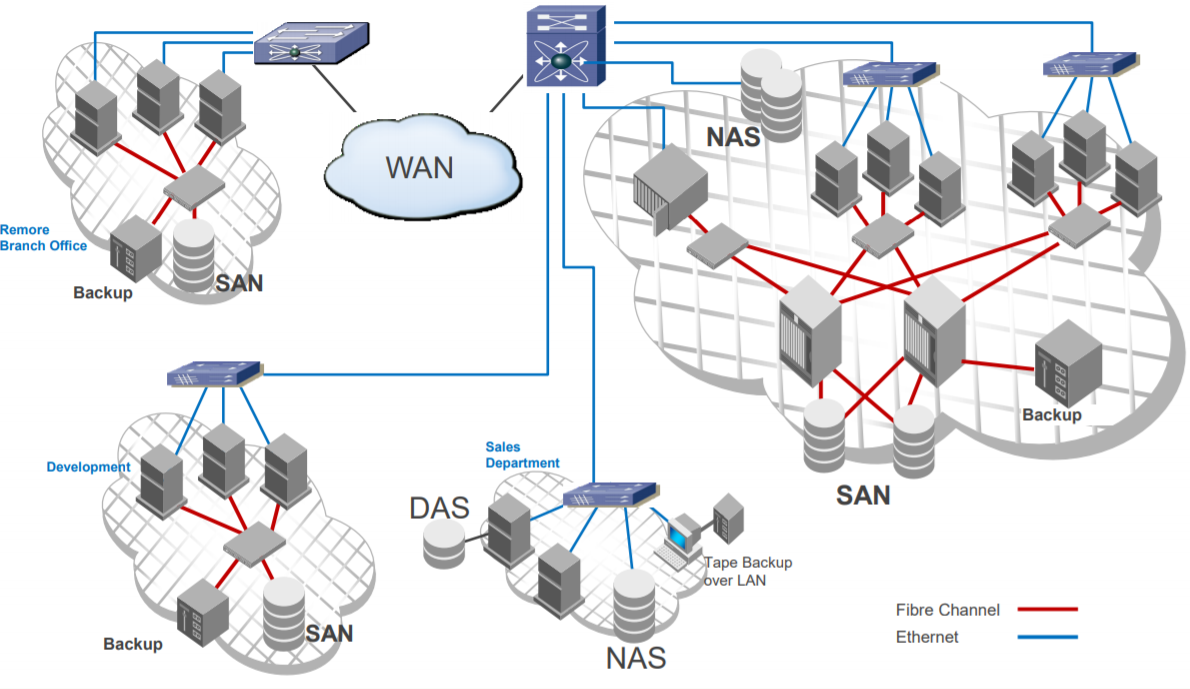Communications in a Data Center

The current trend is to move towards hybrid Data Centers, which does not stop being a mix between physical Data Centers and the cloud. Having a physical Data Center supposes to assume many costs, for what the companies are pulling towards hybrid platforms since they allow to lower the costs. In recent years there has been a change in the paradigm of Data Centers, currently we are looking for Data Centers to stop being manual and begin to be automated, to stop being static and be dynamic, to be more flexible ... the idea that we have of them is changing very quickly.
For example, a technology that is growing with great force and is gaining much ground in the Data Centers is the famous virtualization. This new technology is revolutionizing and radically changing the way we see Data Centers. Virtualization is the solution to certain problems that have been appearing in recent years. The increase in CPU and RAM utilization, the need for more flexibility and availability, the speed of recovery from failures or disasters, the reduction of CAPEX and OPEX and the need for more speed and connectivity for faster access to the content are examples of problems that have appeared in recent years and that virtualization can be a good solution to these. It has also been talked of the Next Generation Data Center, which is the name given to the new Data Centers that use virtualization and new technologies. They consist of fewer and more powerful servers, which provide better performance and capacity.
In the talk he also mentioned the issue of storage in Data Centers, where it was remarked that there are two ways to store information.
- NAS (Network Attached Storage): It is a device that connects to the network like any other, uses the IP protocol and is economical and easy to install. On the other hand, in environments where a high level of performance is required, this device offers very low performance.
- SAN (Storage Area Network): This device does not connect to any Ethernet network or use the IP protocol, specifically it makes use of a protocol called Fiber Channel that works in blocks. Its development is more complex and may have additional costs, but offers greater performance and reliability compared to the NAS.

Diagram of the traditional vision of Data Centers.
To face all the challenges and problems mentioned above that have the current Data Centers, a new infrastructure is proposed within the Data Centers. Separate all devices into four large blocks, the server block, the storage block, the network block and the application services block. Where the block of servers and the block of storage, are becoming more united. Next, we will summarize what Albert told us about these four big blocks:
- Servers block: This block provides a network that supports virtualization and is scalable in order to support multi-core processors and to eliminate potential bottlenecks in applications, supports speeds of up to 10Gb/s and presents two different architectures, the of "End-of-Row" and "Top-of-Rack".
- Storage block: This block is directly connected to the servers and is basically responsible for providing storage to these and the applications that are running on the servers. It uses speeds of 10Gb/s.
- Network block: It is designed to support both IPv4 and IPv6, to reduce costs, improve the levels of availability of services and increase the flexibility of the infrastructure.
- Application services block: It seeks to improve the performance of applications. To do this, the block is divided into three parts, availability, acceleration and security.
This change of paradigm that has been discussed previously entails that we seek to design a unified infrastructure. Until now the networks were separated depending on whether they were servers or storage, but now it is looking to unify everything into one to increase efficiency and reduce energy costs.
Finally, Albert also told us about the VN-Link, a Cisco proposal that wants to move the network's border. By moving the network barrier, we gain visibility to each of the virtual machines, we can configure access policies to each one of them, we can move them as we wish and it allows us to recover from failures or disasters more quickly.
To end this post, we conclude that the entire world of Data Centers is constantly changing and evolving, that new technologies revolutionize this world and the way of seeing it, like virtualization, that thanks to this new technology we have been able to increase the level of features and services of the Data Centers.